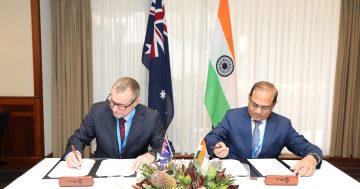Lindsay Hughes* says China’s breaches of agreements that it entered into with India are one consequence of India’s failed policy of strategic autonomy.
 Chinese and Indian military commanders have held their ninth round of talks in the snappily-named Working Mechanism for Consultation & Coordination on India-China Border Affairs.
Chinese and Indian military commanders have held their ninth round of talks in the snappily-named Working Mechanism for Consultation & Coordination on India-China Border Affairs.
The aim is to ease tensions and end the stand-off between them along the Line of Actual Control (LAC) the de facto border between the two countries.
The stand-off began in May last year when, according to India, Chinese troops crossed the LAC near Pangong Tso and intruded by around eight kilometres into Indian territory.
That led to meetings between military commanders and the subsequent withdrawal of some, but not all, of the Chinese troops.
Tensions flared again on 15 June, when Indian and Chinese troops clashed.
That fighting saw 20 Indian soldiers and an undisclosed number of Chinese troops killed (likely to be around 40).
India hit back by rushing troops to the border, equipping them with modern assault rifles, banning the sale of Chinese software products, such as computer games and applications used on mobile phones, and cancelling contracts given to Chinese firms.
According to at least one source, India insists that the onus is on China to carry forward the process of disengagement and de-escalation, saying that the disengagement process has to be conducted simultaneously at all points of dispute along the LAC and not just at selected ones.
That demand is justified in light of China’s penchant towards agreeing to a set of measures, even in writing, and then doing exactly what it chooses, no matter if that contravenes the terms of the agreement.
The security laws enacted in Hong Kong are merely one case in point.
China apparently believes that it is now economically and militarily powerful enough to disregard any agreements, treaties and suchlike that do not now align with its goals.
As a source observes: “The Chinese Army has consolidated its positions in eastern Ladakh and quietly, gradually increased troop numbers at the friction points along the Line of Actual Control.”
This is despite specifically proposing four months ago that the two sides should refrain from sending more troops to the troubled front.
The latest ground assessments confirm that the PLA has not only reneged on the joint statement issued after the sixth round of talks last year, but has done so with attempted stealth.
A day after that round of talks last September, the two sides issued a joint statement that was seen to be a substantive movement forward after months of deadlock.
The two sides had, according to their joint statement, “agreed to earnestly implement the important consensus reached by the leaders of the two countries, strengthen communication on the ground, avoid misunderstandings and misjudgements”.
They agreed to stop sending more troops to the front-line, refrain from unilaterally changing the situation on the ground, and avoid taking any actions that may complicate the situation.
Four months later, that most crucial confidence-building measure is practically useless.
Sources confirm the Indian Army has had no choice but to mirror the gradual build-up on the Chinese side.
As a result, despite the deep winter chill, opposing troops, tanks and armoured personnel carriers are nearer to each other than they have been in the past four months.
To make matters worse, reports are now emerging that China has constructed a village about 4.5 kilometres inside the LAC in the Indian state of Arunachal Pradesh, which China claims as ‘South Tibet’.
According to the report, satellite images show around 100 houses constructed in the village.
Responding to the allegations that China is employing its salami-slicing strategy in Arunachal Pradesh, just as it did in the South China Sea, a spokesperson from India’s Ministry of External Affairs provided the following facile and feeble reply:
“We have seen recent reports on China undertaking construction work along the border areas with India.
“China has undertaken such infrastructure construction activity in the past several years.
“Our Government too has stepped up border infrastructure including the construction of roads, bridges etc. which has provided much needed connectivity to the local population along the border.”
Another report notes, however, that India has not built any roads or infrastructure development close to the new Chinese village on disputed territory.
China has defended the construction of the village, saying that its action was beyond reproach because it had “never recognised” Arunachal Pradesh as Indian territory.
In other words, China is doing in India exactly what it did in the South China Sea and India is in no position to counter its actions.
It is possible that China is showing its belligerence at this time because Beijing knows that India is not ready for a prolonged conflict.
While India does have a few defence treaties with other countries, notably the United States, for sharing intelligence and for providing logistical support, it does not have a specific treaty that would draw, say, the US into a conflict with China.
That is one consequence of New Delhi’s misplaced emphasis on its policy of strategic autonomy.
China respects strength and views the international system in terms of power, which accounts for its emphasis on economic and military might.
India is still modernising its military and at least until that process is sufficiently accomplished as to be able to confront China, it needs to ensure that it has a powerful ally that it can rely upon to counter the Chinese threat.
It needs, in other words, the US on its side in any conflict with China.
If that means abandoning its strategic autonomy for now, then so be it. India cannot afford the after-effects of another 1962 war.
*Lindsay Hughes is a Senior Research Analyst at the Indo-Pacific Research Program.
This article first appeared on the Future Directions International website.











